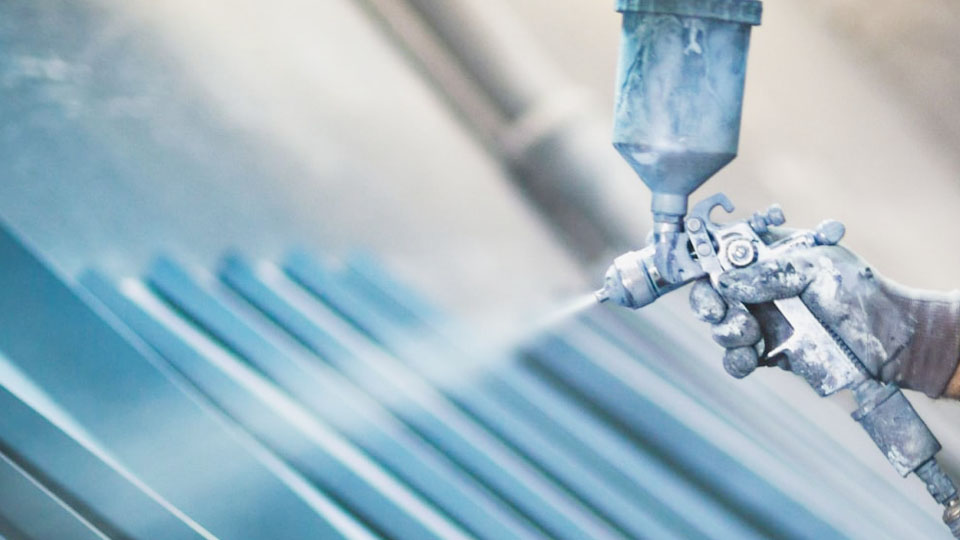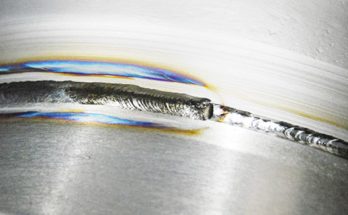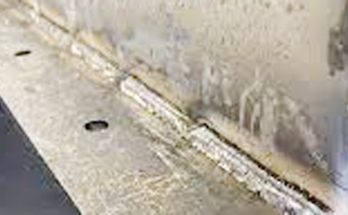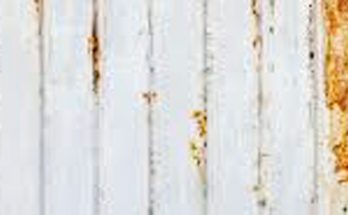Painting galvanized metal can be tricky if you don’t prepare the surface properly. If you’ve ever tried to paint galvanized metal without the right prep work, you probably noticed the paint peeling off sooner than expected.
That’s because galvanized metal has a protective zinc coating that resists corrosion but also prevents paint from sticking well.

Photos by galvanizing.org.uk
I’ve worked with galvanized metal many times, and I’ve learned that preparation is the key to a long-lasting paint job.
If you’re painting a galvanized fence, a metal roof, or even a piece of outdoor furniture, following the right steps will ensure the paint adheres properly and lasts for years.
Why Is It Important to Prepare Galvanized Metal for Painting?
Galvanized metal is coated with zinc to prevent rust and corrosion. While this coating is great for durability, it creates a smooth, slick surface that paint struggles to stick to.
If you paint directly onto untreated galvanized metal, you’ll likely see peeling, chipping, and flaking in no time.
Preparing galvanized metal properly:
- Ensures better adhesion of the paint
- Prevents premature peeling and flaking
- Extends the life of the paint job
- Helps create a smooth and even finish
Steps to Prepare Galvanized Metal for Painting
To get the best results, you need to follow a few essential steps before applying paint. These include cleaning, sanding (if needed), etching, priming, and choosing the right paint.
Clean the Surface Thoroughly
Before anything else, you need to remove dirt, grease, oil, and other contaminants. A dirty surface will prevent paint from sticking properly.
How to clean galvanized metal:
- Mix warm water with mild detergent and use a sponge or cloth to scrub the surface.
- For tough grease or oil, use a degreaser or mineral spirits.
- Rinse thoroughly with clean water to remove any residue.
- Let the metal dry completely before moving to the next step.
Remove the Protective Coating (If Needed)
Newly galvanized metal often has a shiny, protective layer called “passivation” that helps prevent oxidation. However, this coating prevents paint from adhering.
There are two ways to remove this layer:
- Light Sanding – Use fine-grit sandpaper (220-320 grit) or a Scotch-Brite pad to roughen the surface. This helps the primer and paint grip better.
- Chemical Etching – A solution like white vinegar or a commercial etching product can break down the zinc coating slightly, making it easier for paint to adhere.
For smaller projects, vinegar is a simple and affordable option. Just soak a clean rag in vinegar, wipe it over the metal, and let it sit for 10-15 minutes before rinsing.
Apply a Galvanized Metal Primer
One of the biggest mistakes people make is painting directly onto galvanized metal without a primer. A regular primer won’t work—you need a specialized primer designed for galvanized surfaces.
Look for a zinc-rich or bonding primer labeled for use on galvanized metal. These primers create a surface that allows paint to bond effectively.
How to apply primer:
- Use a paintbrush, roller, or spray gun for even coverage.
- Apply a thin, even coat and allow it to dry completely (check the manufacturer’s instructions for drying time).
- If needed, apply a second coat for better adhesion and durability.
Choose the Right Paint for Galvanized Metal
Not all paints will stick to galvanized surfaces. You need to choose a paint specifically designed for metal or one that mentions “galvanized metal” on the label.
The best options include:
- Acrylic latex paints – These are water-based, durable, and flexible, making them a great choice for outdoor galvanized surfaces.
- Epoxy-based paints – These provide a hard, chemical-resistant finish but require a bit more effort to apply.
- Oil-based paints – Some oil-based paints can work, but they may need a galvanized metal primer to prevent adhesion issues.
Avoid using alkyd-based paints unless they are specifically formulated for galvanized metal, as they tend to react with the zinc coating and cause peeling.
Apply the Paint in Thin, Even Layers
Now that your surface is primed, it’s time to apply the paint.
Best practices for painting galvanized metal:
- Use a brush, roller, or spray gun depending on the size of your project.
- Apply thin, even coats to avoid drips and streaks.
- Allow each coat to dry completely before adding another.
- For extra durability, apply two or three coats of paint.
Seal the Paint for Extra Protection (Optional)
If your galvanized metal is exposed to harsh weather or heavy use, adding a clear sealer on top of the paint can provide extra protection. Look for a metal-safe, UV-resistant sealer to prevent fading and chipping.
Mistakes to Avoid When Painting Galvanized Metal
Even with the right preparation, there are a few common mistakes that can ruin your paint job.
- Skipping the primer – Without a proper primer, the paint won’t stick well.
- Using the wrong paint – Not all paints work on galvanized metal, so always check the label.
- Painting over a dirty surface – Any dirt or grease will prevent the paint from adhering properly.
- Applying thick coats – Thick layers can lead to drips, uneven coverage, and longer drying times.
- Not allowing enough drying time – Rushing through the process can cause peeling and poor adhesion.
Recommended Products for Painting Galvanized Metal
If you’re wondering which products to use, here are some great options that work well on galvanized metal:
| Product Type | Recommended Option |
|---|---|
| Cleaner/Degreaser | Simple Green Industrial Cleaner |
| Etching Solution | White Vinegar or Jasco Metal Etch |
| Primer | Rust-Oleum Galvanized Metal Primer |
| Paint | Behr Acrylic Latex Paint or Krylon Rust Protector |
| Sealer (Optional) | Rust-Oleum Clear Enamel Spray |
How Long Does Paint Last on Galvanized Metal?
A properly prepared and painted galvanized metal surface can last 5-10 years or longer, depending on environmental conditions and exposure. Regular maintenance, such as cleaning and touching up chipped areas, can extend the life of the paint.
Conclusion
Painting galvanized metal the right way takes a little extra effort, but it’s worth it for a durable, long-lasting finish. If you clean, etch, prime, and use the right paint, your project will turn out great.
I’ve learned from experience that skipping steps leads to frustration when the paint starts peeling. But if you follow these steps carefully, your paint will stay smooth, even, and well-adhered for years.
If you’re working on an outdoor project like a fence, roof, or shed, take your time with prep work—it’s the secret to a professional-looking result!
Frequently Asked Questions
Can I paint over galvanized metal without priming?
No, primer is essential for proper adhesion. Without it, the paint will peel off quickly.
What is the best primer for galvanized metal?
A zinc-rich or bonding primer specifically designed for galvanized surfaces is the best choice.
How long should I wait between coats of paint?
It depends on the paint type, but generally, 2-4 hours between coats is recommended.
Can I use regular spray paint on galvanized metal?
Only if the spray paint is formulated for galvanized surfaces. Otherwise, it won’t adhere well.
Will vinegar damage galvanized metal?
Vinegar is safe and commonly used for etching galvanized metal before painting. Just rinse it off thoroughly after use.






